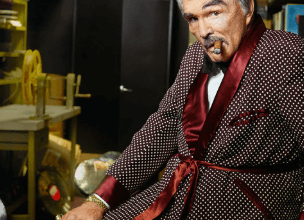Christofer Drew Net Worth: Singer-Songwriter’s Financial Path

Christofer Drew, the prominent singer-songwriter and frontman of Never Shout Never, has experienced a multifaceted financial journey that reflects both the challenges and opportunities within the modern music industry. As traditional revenue sources wane, Drew has adeptly diversified his income through innovative strategies, from streaming to merchandise and live performances. This evolution raises important questions about the sustainability of his financial success and the potential pitfalls he has encountered along the way. What factors have significantly influenced his net worth, and how do they compare to the broader trends in the music landscape?
Early Life and Career Beginnings
Christofer Drew, born on February 18, 1991, in Oceanside, California, embarked on his musical journey at a young age, significantly shaping his career trajectory.
His family background fostered creativity, encouraging diverse childhood interests, particularly in music.
These early influences not only nurtured his artistic expression but also laid the groundwork for his future as a singer-songwriter, illustrating the importance of supportive environments in personal development.
Breakthrough With Never Shout Never
Christofer Drew’s breakthrough with Never Shout Never was significantly influenced by his diverse musical background, which shaped his unique sound and lyrical style.
The band gained viral success through strategic use of social media platforms and innovative marketing, allowing them to connect with a broad audience.
This combination of early influences and adept digital engagement played a crucial role in propelling Drew into the spotlight.
Early Musical Influences
Musical influences often shape an artist’s creative trajectory, and for Christofer Drew, the frontman of Never Shout Never, this was no exception. His early musical inspirations drew from various genres, enabling him to cultivate a unique sound.
| Genre Influences | Notable Artists |
|---|---|
| Indie Pop | The Beatles |
| Folk | Bob Dylan |
| Emo | My Chemical Romance |
| Acoustic | Jack Johnson |
Viral Success Factors
The unique sound cultivated by Christofer Drew, influenced by a diverse array of genres, laid the groundwork for his viral success with Never Shout Never.
Key factors contributing to this phenomenon include:
- Innovative viral marketing strategies that captured audience attention.
- Strategic use of social media influence to engage fans.
- Authentic, relatable lyrics that resonated widely, fostering a loyal fanbase.
Revenue Streams in Music
The landscape of revenue streams in music has evolved significantly, impacting artists like Christofer Drew.
Traditional album sales have seen a decline, while streaming revenue continues to grow, reshaping the financial dynamics of the industry.
Additionally, merchandising opportunities have emerged as a vital source of income, allowing artists to capitalize on their brand and fan engagement.
Album Sales Impact
Album sales remain a significant revenue stream in the music industry, particularly for artists like Christofer Drew, whose unique sound resonates with a dedicated fan base.
To maximize financial success, Drew employs effective album sales strategies, aligning with current album sales trends by focusing on:
- Limited edition releases
- Exclusive merchandise bundles
- Direct fan engagement initiatives
These tactics enhance profitability while ensuring artistic integrity.
Streaming Revenue Growth
As traditional album sales face challenges in the evolving music landscape, streaming revenue has emerged as a dominant force in generating income for artists like Christofer Drew. This shift underscores the importance of revenue diversification through various streaming platforms, allowing artists to harness a broader audience and maximize their financial potential.
| Streaming Platform | Monthly Users (millions) | Payout per Stream ($) |
|---|---|---|
| Spotify | 456 | 0.0036 |
| Apple Music | 88 | 0.0072 |
| Amazon Music | 68 | 0.0040 |
| Tidal | 3.5 | 0.0125 |
| YouTube Music | 80 | 0.0007 |
Merchandising Opportunities Explored
Merchandising has become a vital revenue stream for artists in the modern music industry, serving not only as a means of income but also as a powerful branding tool.
Key elements include:
- Unique merchandise designs that resonate with fans.
- Strategic brand partnerships that enhance visibility.
- Exclusive limited-edition items to drive urgency and demand.
These avenues foster deeper connections and create sustainable financial growth for artists like Christofer Drew.
Touring and Live Performances
Touring and live performances have significantly contributed to Christofer Drew’s overall net worth and musical reputation.
Engaging with a live audience not only enhances his artistic expression but also drives substantial ticket sales.
These performances serve as a vital revenue stream, allowing him to connect with fans while solidifying his status within the music industry, emphasizing the importance of live engagements in his financial success.
Merchandise and Brand Collaborations
Christofer Drew’s financial portfolio is further bolstered by his strategic approach to merchandise and brand collaborations.
His effective merch strategies have led to lucrative partnerships that resonate with his audience.
Key elements of this success include:
- Exclusive limited-edition apparel
- Collaborations with eco-friendly brands
- Artist-branded accessories
These initiatives not only enhance his brand presence but also contribute significantly to his overall net worth.
Streaming and Digital Sales
Revenue generated from streaming and digital sales has become a cornerstone of modern musicians’ financial success, and Christofer Drew is no exception.
His presence on various streaming platforms has allowed him to tap into a global audience, significantly boosting his digital royalties.
This transition to a digital-centric model not only enhances his reach but also provides a sustainable income stream in today’s music industry.
Other Creative Ventures
Many musicians today diversify their income streams through various creative ventures, and Drew is no exception.
He has engaged in several initiatives that expand his artistic portfolio, including:
- Creative partnerships with emerging artists to fuse different musical styles.
- Side projects that explore genres outside his primary focus.
- Merchandising collaborations that leverage his brand while connecting with fans.
These efforts enhance his financial stability and artistic expression.
Financial Challenges and Setbacks
While creative ventures have provided additional income streams for artists like Drew, financial challenges and setbacks are an inherent part of the music industry landscape.
Financial pitfalls, such as fluctuating album sales and unpredictable touring income, can hinder growth.
However, successful artists often demonstrate resilience through overcoming obstacles, adapting their strategies, and exploring diverse revenue avenues to maintain financial stability in a turbulent environment.
Current Net Worth Estimation
Estimating Christofer Drew’s current net worth involves a careful analysis of various income sources, including music sales, touring, merchandise, and other creative endeavors.
His wealth estimation can be summarized through the following current financials:
- Revenue from music streams and sales.
- Earnings from live performances and tours.
- Profits from merchandise and collaborations.
These streams collectively contribute to his overall financial standing.
Conclusion
In summary, Christofer Drew’s financial journey exemplifies the adaptability required in the contemporary music industry, akin to a river navigating diverse terrains. By leveraging multiple revenue streams, including touring, merchandise, and digital sales, Drew has cultivated a resilient brand. Despite facing challenges, strategic engagement with fans and innovative marketing approaches have fortified his position. The resulting net worth reflects not only personal success but also a broader trend of musicians thriving through diversification and creative entrepreneurship.






